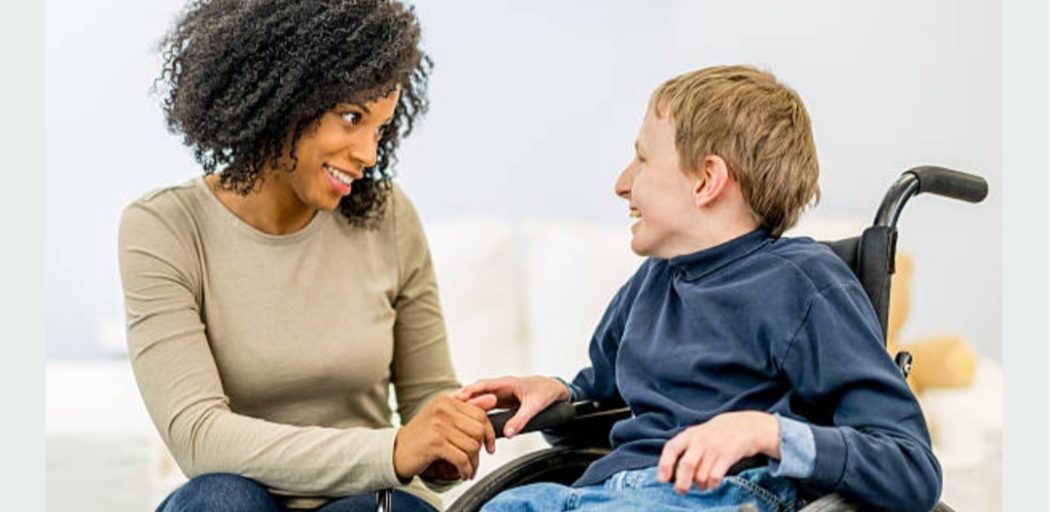A cerebral palsy diagnosis can be a scary thing for new parents. These disabilities affect the way a child’s muscles coordinate together and can cause problems with things such as movement, speech or even breathing. However, by getting the right care at the right time it is possible for children to live their lives in a healthy and happy way.
Cerebral palsy is caused when the brain is damaged before, during or after birth from events such as illness, being born prematurely or from injuries sustained during childbirth. The damage results in spasticity in some muscles which causes them to involuntarily contract leading to lack of coordination and balance. It also often affects how a person walks, talks and holds themselves with many sufferers having very tight muscles which makes them appear stiff and uncoordinated. These spastic muscles can often get in the way of many daily tasks such as self-care, feeding, dressing or even learning to walk.
The brain damage that causes cerebral palsy is permanent but with the help of physiotherapists, doctors and parents it is possible for children with this disability to live happy lives. Doctors recommend treatment in the form of physiotherapy before a child starts walking so they learn to move in an attempt to stop muscle problems from appearing later on. Early intervention is also recommended when it comes to speech therapy so that speech delays are noticed early on and corrected before developing into more serious problems later in life. It is also important for parents to get in contact with their local cerebral palsy support groups to get advice and help when raising a child with disabilities.
One piece of equipment that can be used to help children with cerebral palsy is a cerebral palsy corner chair. A cerebral palsy corner chair, also known as a corner seat or corner chair is a specialized piece of seating equipment designed for individuals with cerebral palsy or other mobility impairments. The chair is shaped to fit into a corner of a room, with one side providing back support and two sides offering lateral support. It is typically made with adjustable features to cater to the specific needs and comfort of the user.
The primary purpose of a cerebral palsy corner chair is to provide proper positioning and support to individuals who have difficulties sitting independently or maintaining a stable sitting position. The chair helps improve posture, balance, and stability while promoting optimal alignment of the spine and joints. These chairs often come with additional accessories and supports such as headrests, adjustable trays, and harnesses, depending on the user’s needs. They can also be used as part of daily activities, therapy sessions, or for recreation purposes.
It’s important to note that the specific design and features of a cerebral palsy corner chair can vary depending on the manufacturer and the needs of the individual using it. Therefore, it is recommended to consult a healthcare professional or specialist to determine the most appropriate chair for an individual with cerebral palsy.
Though raising a child with cerebral palsy can be difficult, it is possible to help them live happy and healthy lives. Parents need to ensure that their child receives early intervention and physiotherapy through doctors and support groups respectively. Also, by maintaining your child’s health and working with them on their unique strengths and limitations, you can help your child achieve the highest quality of life possible.
Early Symptoms of Cerebral Palsy
- Delayed motor milestones: Infants with cerebral palsy may have delayed or abnormal development of motor skills such as rolling over, sitting up, crawling, or walking.
- Muscle stiffness or floppiness: The child may exhibit increased or decreased muscle tone, which can manifest as stiff and tight muscles or as floppy and weak muscles.
- Poor coordination and balance: Children with cerebral palsy may have difficulty coordinating movements and maintaining balance, making tasks like reaching for objects or walking more challenging.
- Abnormal posture: They may adopt unusual postures or exhibit involuntary movements, such as favoring one side of the body or holding the arms or legs in abnormal positions.
- Tremors or involuntary movements: Some children with cerebral palsy may have tremors or involuntary movements, making it difficult for them to control their actions.
- Difficulty sucking, swallowing, or speaking: Infants with cerebral palsy may have trouble with feeding due to poor control of the mouth muscles. Older children may experience difficulties with articulation or speech.
- Atypical reflexes: Certain reflexes, such as the Moro reflex (startle reflex) or the Babinski reflex (toes fan out when the sole of the foot is brushed), may persist longer than normal or may be absent.
It’s important to note that these symptoms can vary significantly from one child to another, and the severity of cerebral palsy can range from mild to severe. If you suspect that a child may have cerebral palsy, it is advisable to consult with a healthcare professional for a proper evaluation and diagnosis.
____________________________________________________________________________________
Are you looking for where to buy high quality medical equipment and supplies?
Visit our online store at www.waltsonglobal.com
Email: [email protected]
For more stories like this, join our Social media community on Facebook, Instagram, X
Need help with your order Chat with us here via WhatsApp







677 Comments